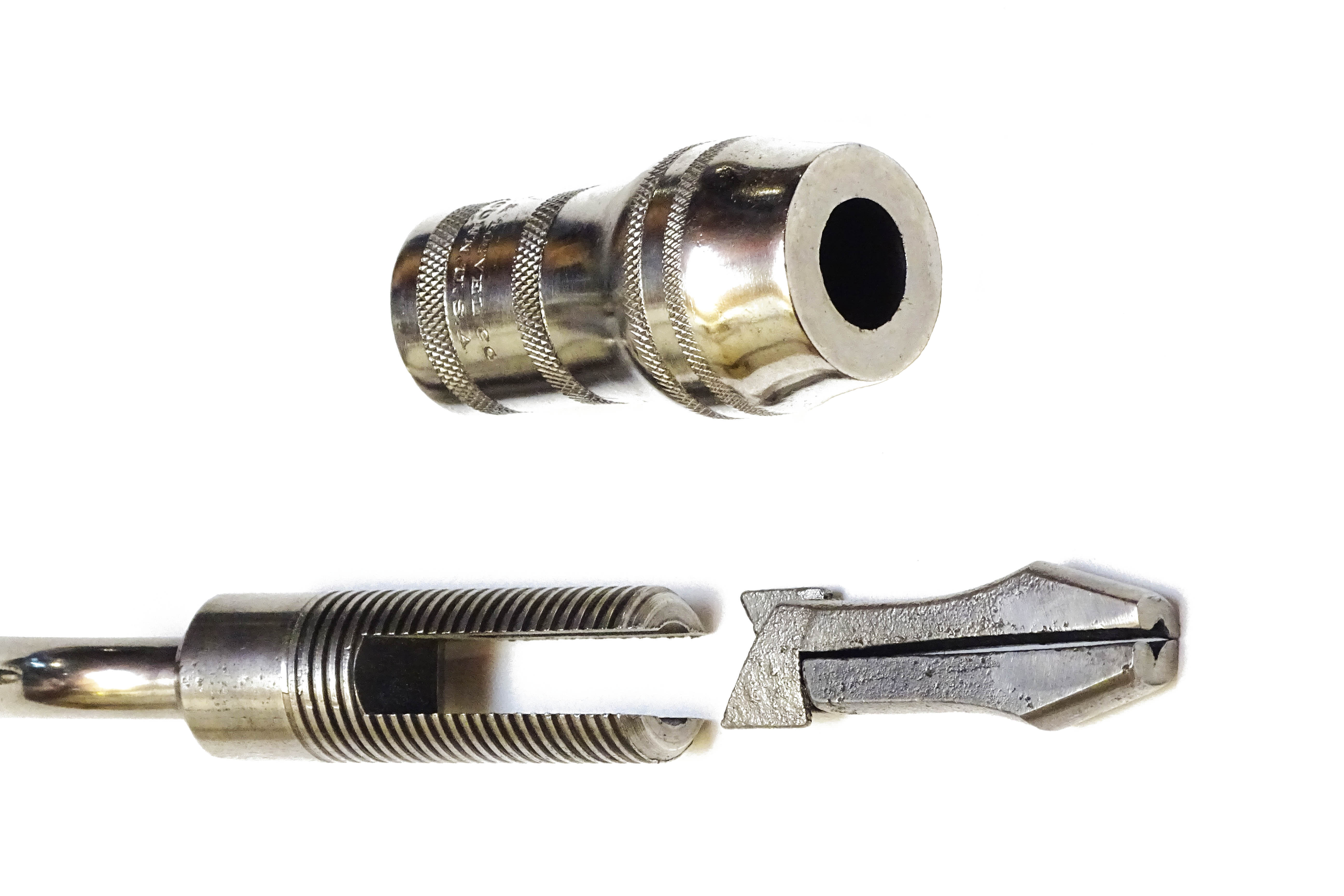
For many collectors, including myself, the hunt is as exciting as the find. We look for that special elusive piece for our collections, hoping to find what others have overlooked. We train ourselves to be diligent and observant, trying to find a diamond in the rough. Yet I often wonder how many pieces I have looked at and did not realize their true value. We become so good at quickly dismissing the mundane, I wonder if we sometimes miss the rarity in front of us. The following is an example in case.
Recently I saw a Stanley brace on an auction website which was marked as a 923 which I knew from the picture was incorrect. The 923 is a ratcheted brace while this one is a non-ratcheting brace. I almost moved on but decided after a closer look to purchase it. It was a simple non-ratcheting brace in good condition but upon closer inspection, I found it to be a very interesting brace.

First some background on Stanley braces. The Stanley Rule & Level Company produced their first brace following Augustus Stanley receiving a patent for a bit stock on November 20, 1869. The brace was made of cast iron and had a latch or pawl to hold the bit in place. They only offered it for one year, 1870, and apparently it was not successful, but a cherished piece for collectors today.
The company did not manufacture any more braces until the early 20th century when they decided to enter the bit-stock market. At this time, when the company decided to enter a new tool market, they would purchase existing toolmaker’s businesses that were already established in the field, had experience in manufacturing the tool, a skilled work force, capable management and a well-known reputation with tool users.
So, in 1903, Stanley decided to enter the bit-stock market when they had the opportunity to purchase three companies that made quality braces. These companies were: Parmenter and Bullock of Gananoque, Canada; Mason and Parker of Winchendon, Massachusetts; and the Harry S. Bartholomew Co. of Bristol, Connecticut.
With the acquisition of the Harry S. Bartholomew Co., Stanley acquired a number of patents pertaining to bit-stocks. One of these patents was for a chuck with adjustable automatic jaws, issued on May 24, 1870. These jaws were used on the very early Stanley braces along with the distinctive chuck shell that Bartholomew had used. These jaws and chuck shell were supposedly discontinued by 1907. If you notice in the following picture, the brace I purchased has the Bartholomew jaws and chuck shell which should place the manufacturing of the brace between 1903 and 1907.

In April of 1909, Stanley purchased another old and well-established brace manufacturing company, the John S. Fray Co. of Bridgeport, Connecticut. Stanley kept Fray as a separate division and slowly phased it over to the Stanley name. They discontinued most of the Fray model numbers by 1927.
Some of the braces made in the Fray plant were made with the Fray numbering system and labeled “John S. Fray and Stanley Rule and Level Co.” and were marketed through the John S. Fray catalog and are highly sought after today. Stanley’s numbering system did not include the brace’s sweep size into the model number as Fray did. Only the Fray braces had the sweep size incorporated into the model number along with a number indicating the grade of the brace.
On the brace I purchased, the model number is 48 which is a Fray model number as Stanley never marketed a model 48 brace. For the Fray non-ratcheting braces, the “4” in the model number designates the grade as being a standard plain finish which is the same as the grade “3” of their ratcheting braces. The “8” in the model number is the designation for an 8-inch sweep. For Fray’s ratcheting braces’ model numbers, the sweep was designated first followed by the grade while the non-ratcheting braces’ model numbers had the grade designated first followed by the sweep.

So, the first peculiarity about this brace is the Bartholomew jaws and chuck shell, which were supposedly discontinued by 1907, with a Fray model number which one would assume means it was manufactured in the Fray plant, purchased later in 1909. Also, the name Fray is not stamped on the brace along with Stanley Rule and Level Co. as was commonly done with braces produced in the Fray plant.
Finally, the brace has “Winchester” stamped in block letters on the frame of the brace.

It should be noted that Winchester did manufacture braces but it was after World War I when they wanted to retain their work force so they decided to get into manufacturing other product lines other than weaponries. They marketed braces in the early 1920s and stamped the name “Winchester” on their braces in a lightning bolt style. So, this brace was not one of their productions and the stamping appears to have been done during the manufacturing process and not done by hand in a shop environment. So, another piece to add to the mystery. Did Winchester order a shipment of braces with their name stamped on the frame and was the Fray plant tasked with the order? But why the Bartholomew jaws which should have been discontinued before Fray was purchased and there were much better jaws offered by Stanley after acquiring Fray. To my knowledge, Fray did not produce braces with the Bartholomew jaws or at least I have never seen any. So, a common brace at first glance, just another mundane piece, yet upon closer inspection, it is not so mundane after all.

I praise you because I am fearfully and wonderfully made; your works are wonderful, I know that full well. Psalm 139:14